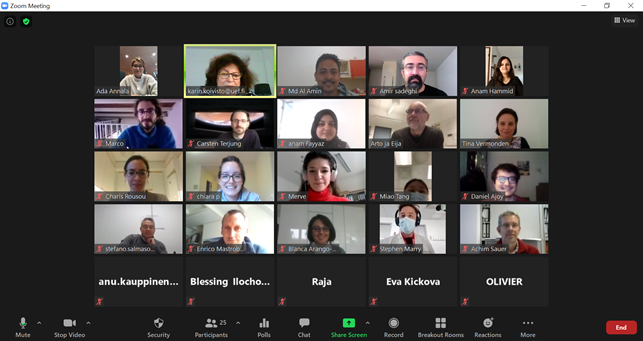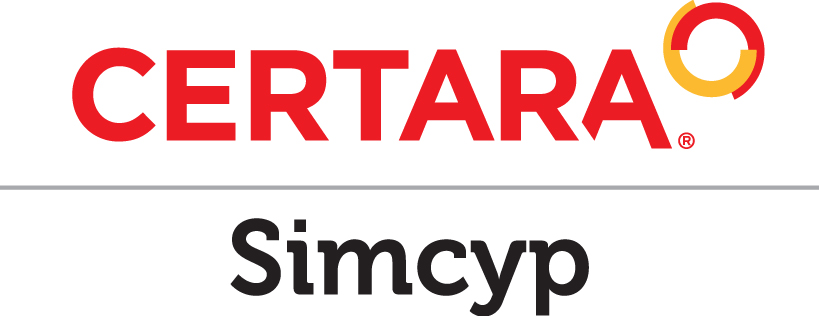NEWSLETTER 2020 / 4


This project has received funding from the European Union’s Horizon 2020 research and innovation programme under the Marie Skłodowska-Curie grant agreement No 722717.
2020 has been a unique year, keeping Europe in pandemic mode for the past 10 months. The novel COVID-19 virus has given rise to a global pandemic that has destabilized most institutional settings. Facing these challenges and amidst the pandemic, the OcuTher-project nevertheless has tried to achieve its goals.
OCUTHER CONFERENCES & TRAINING ACTIVITIES
Courses and workshops are organized in connection with OcuTher events or scientific conferences in relevant fields.
4TH OCUTHER CONFERENCE – ONLINE EVENT (ZOOM), 13.-15.10.2020
‘Beyond the state of the art in ocular therapeutics – How these advances can be used for different disciplines’
The 4th OcuTher Conference was originally planned to take place at the University of Tübingen in Germany but had to be transformed to a digital conference due to the public health crises. The Conference featured presentations by OcuTher ESRs, as well as lectures from selected experts from the fields of ophthalmology and drug delivery.
The conference was recorded, in order for all project members to watch the presentations and discussions in their own time and in case they have missed part of the conference.

CERTARA/Simcyp COURSE
The final OcuTher course, Biologics focused workshop was held by Certara/Simcyp as an online event 8.-9.10.2020.
PROJECT EXPLOITATION
A range of different experimental and computational methods have been developed to augment ocular drug development. This includes pharmacokinetic non-invasive fluorescence methods to monitor drug and delivery system kinetics in the eyes, methods set up for the studies of expression proteins that may affect ocular distribution and elimination of drugs. Furthermore, the model structures and related mathematics have been generated for ocular pharmacokinetics. Importantly, we have determined the dose scaling factors for intravitreal drug administration between rat, rabbit and human. The work towards pharmacodynamic test methods so far includes cell model work on autophagy in age-related macular degeneration, and methods for measuring retinal inflammation and immunological responses.
Pharmaceutical development of drug delivery systems has progressed in many respects. Delivery systems have been generated based on many technologies, including prolonged action gels, soluble polymeric conjugates, magnetic nanoparticles for topical administration, ultrasound activatable systems for targeted drug release, and nano-sized polymeric assemblies, liposomes and protein cages for cellular drug targeting. The studies have been concentrated so far on optimization of pharmaceutical properties, such as size, charge, stealth-coating , labeling, stability and drug loading to the particles. Some delivery systems have shown prolonged release, promising dosing intervals of even a year. On the other hand, some pullulan conjugates showed cell specific delivery in the retina.
Biological testing of drug delivery materials has been done using toxicological cellular methods and in some cases mobility and interactions of the particles have been investigated using ex vivo vitreal models. Polymeric assemblies (micelles, polymersomes, conjugate, magnetic nanoparticles) have been studied also in vivo in rats and rabbits and they showed prolonged retention in the vitreous after injection. New drug candidates and delivery methods have been tested using cellular methods. For example, VCP inhibitors demonstrated neuroprotective effects in retinal explant cultures.
Overview of the results:
The OCUTHER project has generated generalizable results that are useful for ocular drug developers at international scale (e.g. enzyme activities, kinetic parameters in different species). Furthermore, the tools of the OCUTHER project will be utilized in drug development, such as inter-species dose scaling factors and pharmacokinetic models. We have developed several ocular drug delivery systems that are promising for the delivery of poorly soluble drugs, retinal cell based targeting and prolonged action and longer drug dosing intervals. New drugs for the retinal regeneration have been investigated and their efficacy was improved with the delivery systems. The project consortium includes many companies that offer potential avenues for further exploitation. Project results have been disseminated in various conferences, public events, newsletters and publications.

